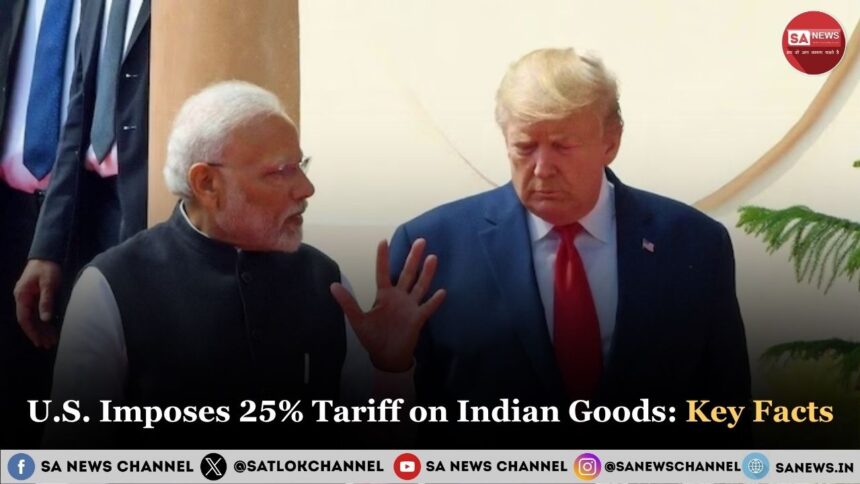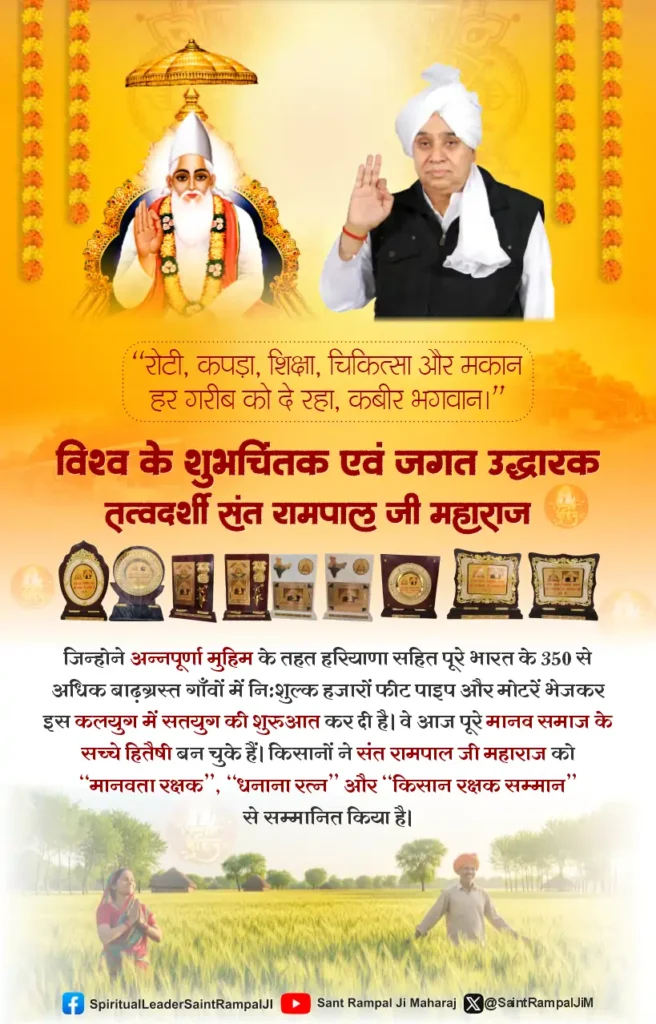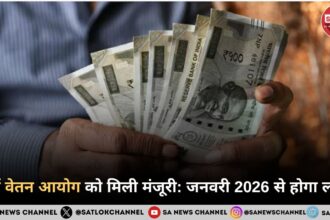On July 30, 2025, President Donald Trump announced a 25% tariff on all Indian goods entering the United States, beginning 1st August 2025. In addition, unspecified extra economic penalties were hinted at, particularly due to India’s continuing purchases of Russian oil and military equipment. This article provides all facts related to the upcoming development in India-USA bilateral trade.
- Highlights on U.S. Imposes 25% Tariff on Indian Goods
- Why Did Donald Trump Threaten India With a 25% Tariff?
- Which Indian Sectors Will Be Hit Hardest?
- Economic & Market Wherabouts
- India’s Reaction & Strategy
- Global Trade Landscape & Broader Implications
- They Path Ahead To India-USA Bilateral Trade Negotiation
- End Trade Wars and Inner Wars With True Spiritual Knowledge
Highlights on U.S. Imposes 25% Tariff on Indian Goods
- US President Donal Trump described India as a ‘friend’ but criticised its high tariffs and ‘strenuous’ non‑monetary trade barriers on U.S. goods.
- In a more-or-less expected move, Trump has announced a 25% tariff for India along with an additional penalty for strengthening its defence systems via purchase of Russian military equipment and oil.
- Despite the announcement, senior U.S. officials stated trade negotiations with India remain ongoing, with scope for a deal before the tariff is fully imposed.
- The contradictory stance of the US President and his office representatives portrays the former’s tweet more like a threat.
- Donald Trump later deleted the tweet about tariffs imposed on India.
- Meanwhile, India responded through an official statement released in a press release stating it is ‘studying’ the implications of US President Donald Trump’s statement.
India’s official statement: https://www.pib.gov.in/PressReleseDetailm.aspx?PRID=2150415
- India views the move as tactical, still committed to a trade treaty. Officials plan intensive talks in August, hoping for an agreement before the tariffs become permanent.
- Market consequences include downward pressure on GDP growth, export competitiveness, foreign investment inflows and the rupee exchange rate.
- Most affected sectors would be jewellery, pharma, textiles, auto components, among others.
- Longer-term implications of this move could include a strategic shift in export diversification and trade partnerships outside the U.S.
Why Did Donald Trump Threaten India With a 25% Tariff?
- The main bone of contention, as per Donald Trump’s statement, is India’s high tariff on the USA.
- A further rationale was India’s economic ties with Russia, particularly as one of the largest buyers of Russian oil and military hardware, which Trump linked to funding Russia’s war effort in Ukraine.
- It is important to note that the tweet on India was later deleted by Donald Trump. However, observers were quick to capture the image of his tweet.
Image Title: US President Donald Trump’s deleted tweet on Twitter X.
Which Indian Sectors Will Be Hit Hardest?
Around one-tenth of India’s exports to the U.S., particularly in high-volume sectors, are likely to be affected between July and September 2025 due to the newly imposed tariff:
- Gems & Jewellery: The U.S. receives over USD 10 billion in exports annually from this sector, and margins are likely to compress sharply.
- Pharmaceuticals: India supplies around USD 8 billion in generic drugs annually to the U.S. market.
- Textiles, Ceramics, Chemicals, Auto Components, Electronics: These sectors also depend heavily on U.S. demand and may face pressure if the 25% tariff is implemented.
Economic & Market Wherabouts
- GDP & Growth: Several economists forecast a downward revision to India’s growth trajectory for FY 2025–26, if no deal materialises by September-October 2025.
- Currency & Capital Flows: The INR may weaken amid sentiment concerns and potential outflows. This can also impact foreign investment patterns in India.
India’s Reaction & Strategy
- Government officials, trade bodies like FICCI and industry leaders have expressed concern, calling for a swift and reciprocal deal with the U.S. to avoid long-term retaliation effects.
- Some voices see the tariff as a negotiation tactic rather than a permanent shift. India remains optimistic about concluding a comprehensive trade agreement by September-October, with U.S. negotiators slated to visit New Delhi mid-August.
- Though opinions remain divided on whether there is opportunity for India hidden in this adversity.
Global Trade Landscape & Broader Implications
- The levy is part of Donald Trump’s broader ‘Liberation Day’ tariff strategy, under which the U.S. has already imposed tariffs on several other countries.
- Economists generally view unilateral protectionist tariffs as harmful, leading to inefficiencies, higher consumer prices, welfare losses and slower productivity over time.
- Other economies like Vietnam, Bangladesh, Indonesia and Japan have secured much lower tariffs post negotiations. They stand to gain competitive advantage over Indian exporters to the U.S., in case the 25% tariff is implemented.
They Path Ahead To India-USA Bilateral Trade Negotiation
- Negotiation Window: Mid-August will mark a critical moment as Indian and U.S. officials prepare for high-level discussions that could influence the future of their trade relationship. If a trade agreement is struck, tariffs may be rolled back or softened.
- Short-Term Pain, Long-Term Gain Strategy: India may face export losses and market volatility in coming months, but longer-term resilience will depend on successful trade diversification.
- Policy Response: Indian government and private sectors may pursue fiscal measures, export incentives and new trade pacts to cushion the blow in the event it does come.
- Global Strategy Shift: India may accelerate pivot toward multilateral trade frameworks, including FTAs with the European Union, ASEAN and other trade markets.
End Trade Wars and Inner Wars With True Spiritual Knowledge
As global economies clash in the pursuit of dominance through tariffs, sanctions and strategic alliances, the world finds itself increasingly entangled in cycles of fear, retaliation and material obsession. The recent trade hostilities between the U.S. and India are but one symptom of a larger disorder of this world. The human race prioritising profit over peace and competition over compassion.
Jagatguru Tatvdarshi Sant Rampal Ji Maharaj explains such conflicts are deeply rooted in ignorance of our true purpose as humans. He emphasises that true peace and lasting prosperity are not born from economic competition, but from acknowledging Supreme God Kabir and living according to the .
Learn how true spiritual knowledge of Sant Rampal Ji Maharaj can dissolve the seeds of all conflict and lead us to true salvation and ever lasting peace on:
- Website: www.jagatgururampalji.org
- YouTube: Sant Rampal Ji Maharaj
- Facebook: Spiritual Leader Saint Rampal Ji
- Twitter: @SaintRampalJiM









